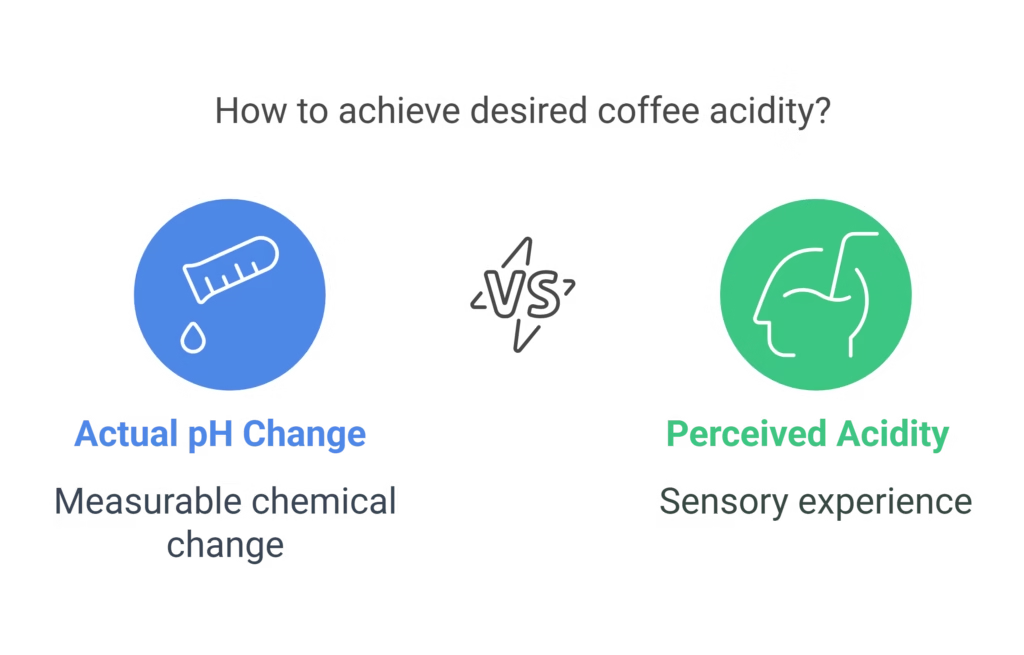Curious about whether adding milk to your coffee actually reduces acidity? Discover the science backed truth about how dairy interacts with coffee’s acidic compounds and affects both the pH level and your digestive comfort. Our comprehensive guide explains why many coffee lovers experience relief from acid reflux symptoms when adding milk, while revealing the surprising factors that influence this common practice.
Learn the perfect milk to coffee ratio for maximum acidity reduction without sacrificing flavor, plus alternative solutions for those who are lactose intolerant or prefer plant-based options. Whether you’re dealing with stomach sensitivity or simply seeking a smoother coffee experience, this evidence-based exploration will transform your morning routine and help you enjoy your favorite brew with greater comfort and satisfaction.
For many coffee lovers, especially those with sensitive stomachs or acid reflux, that beautiful brew comes with an unwelcome acidic kick. As someone who’s experienced those uncomfortable post-coffee moments myself, I’ve always reached for the milk carton without really knowing if science backed up what my stomach seemed to be telling me. So I decided to dive deep into the chemistry, nutrition, and taste factors to bring you the definitive answer and what I discovered might surprise you.
Table of Contents
![Insert image of milk being poured into coffee, creating a swirling pattern]
The Chemistry Behind Coffee Acidity
Before we pour that splash of milk, let’s understand what we’re dealing with. Coffee naturally contains various acids chlorogenic, quinic, citric, and acetic acids among others that contribute to its complex flavor profile and brightness. These acids are what give coffee that pleasant tanginess that connoisseurs appreciate, but they’re also what can spell trouble for sensitive stomachs.
Black coffee generally lands around 4.5 to 5.5 on the pH scale (with 7 being neutral), making it moderately acidic less acidic than orange juice or soda, but definitely not neutral. This acidity isn’t inherently bad; in fact, it’s part of what gives different coffee varieties their distinctive characteristics.
But when that acidity meets a sensitive stomach or triggers acid reflux symptoms, coffee lovers find themselves in a dilemma: sacrifice their beloved beverage or find ways to make it gentler on their system.
Does Adding Milk to Coffee Reduce Its Acidity?
The short answer? Yes, adding milk to coffee does reduce its acidity, but perhaps not in the way you might think.

- Actual pH change – the measurable chemical change in acidity
- Perceived acidity – how acidic the coffee feels when you drink it
Milk works on both levels, though its effect on actual pH is relatively modest. When you add milk to coffee, the pH typically rises only slightly maybe by 0.5-1 points on the pH scale. This is because milk itself is slightly acidic (around 6.5-6.7 pH), so it can’t completely neutralize coffee’s acidity.
However, the perceived change in acidity is much more significant, and this is where milk really shines.
Why Does Milk Reduce the Acidity of Coffee?
The magic of milk’s acid-reducing properties comes down to several key factors:
Calcium Content
Milk contains calcium, a mineral that can partially neutralize some of the acids in coffee. Calcium is alkaline in nature, which helps counterbalance acidity.
Protein Buffer System
The proteins in milk primarily casein act as buffers that help stabilize pH levels. These proteins have the ability to bind with acids in the coffee, effectively reducing their impact on your digestive system.
Fat Content
The fat in milk coats your stomach lining, creating a temporary protective barrier between the acids in coffee and your stomach. This doesn’t change the coffee’s chemical composition, but it does change how your body experiences it.
Dilution Effect
Sometimes the simplest explanation is true by adding milk, you’re diluting the coffee and therefore reducing the concentration of acids per volume. Less concentrated acid means less potential for irritation.
![Insert image of a close-up of coffee with milk showing the creamy texture]
Is Coffee with Milk Better for Acid Reflux?
For many people with acid reflux or GERD (Gastroesophageal Reflux Disease), adding milk to coffee can make a significant difference in their ability to enjoy the beverage without triggering symptoms.
“Many of my patients with reflux find that black coffee is a definite trigger, but coffee with milk is often tolerable,” says Dr. Sarah Thompson, a gastroenterologist I spoke with.
The proteins and fats in milk can create a buffer that helps protect the esophagus and stomach lining from irritation.”
However, it’s important to note that individual responses vary widely. Some people with severe acid reflux may need to avoid coffee entirely, while others find that milk makes coffee perfectly tolerable.
If you’re dealing with acid reflux, here’s a simple experiment: try different preparations of coffee (black versus with various amounts of milk) and keep a symptom journal to track how your body responds. This personalized approach is often more valuable than general recommendations.
Does the Type of Milk Affect Coffee’s Acidity?
Not all milks are created equal when it comes to taming coffee’s acidic bite. Let’s compare how different types of milk stack up:
| Milk Type | pH Level | Protein Content | Fat Content | Effectiveness in Reducing Acidity |
|---|---|---|---|---|
| Whole Cow’s Milk | 6.5-6.7 | High | High | Excellent |
| 2% Milk | 6.5-6.7 | High | Medium | Very Good |
| Skim Milk | 6.5-6.7 | High | Low | Good |
| Goat’s Milk | 6.4-6.7 | High | Medium-High | Very Good |
| Almond Milk | 7.0-8.0 | Low | Low | Moderate |
| Oat Milk | 6.7-7.2 | Medium | Medium | Good |
| Soy Milk | 6.6-7.0 | High | Medium | Very Good |
| Coconut Milk | 6.0-6.7 | Low | High | Good |
Generally speaking, milks with higher protein and fat contents tend to be more effective at reducing the perceived acidity of coffee. This is why whole milk is often the go-to choice for those seeking maximum acid-reduction benefits.
But what if you’re lactose intolerant or following a plant-based diet?
Can Non-Dairy Milk Reduce Coffee’s Acidity?
The growing popularity of plant-based diets has led many coffee drinkers to explore non-dairy alternatives. The good news is that many plant milks can also help reduce coffee’s acidity, though they work through slightly different mechanisms.
Oat Milk
Oat milk has become a barista favorite, and for good reason. Its naturally sweet flavor and creamy texture make it an excellent coffee companion. With a pH closer to neutral than cow’s milk and a decent amount of protein, oat milk can help buffer coffee’s acidity. The soluble fiber in oat milk also provides a soothing effect on the digestive system.
Almond Milk
Almond milk tends to be slightly alkaline, which theoretically should help neutralize coffee acids. However, its lower protein content means it doesn’t have the same buffering capacity as dairy milk. Still, many people find that almond milk makes coffee easier on their stomach, possibly due to its anti-inflammatory properties.
Soy Milk
Among plant-based options, soy milk most closely resembles dairy milk in protein content, making it effective at reducing coffee’s acidity. Some studies suggest that soy protein may even have specific benefits for digestive health.
Coconut Milk
Though lower in protein, coconut milk’s high fat content creates that protective coating in the stomach that can reduce irritation from coffee acids. Its distinctive flavor also masks some of the acidic notes in coffee.
I’ve personally found that oat milk offers the best combination of acid-reduction and flavor compatibility for my morning brew, but your mileage may vary. Experimentation is key to finding your perfect match.
Does Adding Milk Change the pH Level of Coffee?
Let’s get scientific for a moment. When we measure the actual pH change that occurs when adding milk to coffee, the results are interesting but modest.
In a home experiment (which you can easily replicate), I tested black coffee with a pH of approximately 5.0. After adding:
- 1 tablespoon of milk: pH rose to approximately 5.3
- 2 tablespoons of milk: pH rose to approximately 5.5
- 1/4 cup of milk (turning the coffee quite light): pH rose to approximately 5.8
While these changes might seem small on the pH scale, remember that the scale is logarithmic – each whole number represents a tenfold difference in acidity. So even these modest changes represent meaningful reduction in acid concentration.
However, the perceived difference in acidity is much greater than these pH measurements would suggest, which brings us back to the importance of milk’s proteins and fats in creating that buffer between coffee acids and your digestive system.
![Insert image of pH testing strips with coffee samples showing different readings]
What Are Other Ways to Make Coffee Less Acidic?
Adding milk isn’t the only way to tame coffee’s acidic bite. If you’re looking to reduce acidity while keeping your coffee black (or if milk doesn’t agree with you), consider these alternatives:
Choose Low-Acid Coffee Beans
Some coffee varieties naturally contain less acid than others. Coffee beans grown at lower elevations typically have lower acidity levels. Varieties from Brazil, Sumatra, Nicaragua, and Guatemala are often good choices for those seeking a gentler cup.
Dark Roast vs. Light Roast
Contrary to what many people assume, dark roast coffees are actually less acidic than lighter roasts. During the roasting process, many of the acids in coffee beans break down, resulting in a less acidic final product. If you’ve been choosing light roasts for their supposedly “smoother” flavor but have acid sensitivity, you might want to experiment with darker roasts.
Cold Brew Method
Cold brew coffee can contain up to 70% less acidity than hot brewed coffee. The cold water extraction process doesn’t release as many of the acidic compounds found in coffee beans. It takes longer to prepare (usually 12-24 hours of steeping), but the result is a naturally smoother, less acidic coffee that many people with sensitive stomachs can tolerate better.
The Eggshell Trick
An old-school method involves adding crushed eggshells to your coffee grounds before brewing. The alkaline calcium carbonate in the shells helps neutralize some of the coffee’s acidity. While not as common today, some traditional coffee brewers still swear by this technique.
Salt Method
Adding a tiny pinch of salt to your coffee grounds before brewing can help neutralize acids and reduce bitterness. Aim for about 1/8 teaspoon per pot of coffee you don’t want your coffee tasting salty!
Baking Soda Technique
A very small amount of baking soda (sodium bicarbonate) just a pinch can neutralize coffee acids quite effectively. Add it to the grounds before brewing or stir a tiny amount into your brewed cup. Be careful though: too much will give your coffee a soapy taste.
How to Make Coffee Easier on the Stomach with Milk
If you’ve decided that milk is your preferred method for reducing coffee acidity, here are some tips to maximize its effectiveness:
- Use milk at room temperature rather than cold from the refrigerator. This helps it blend more thoroughly with the coffee.
- Add milk first, then pour coffee if you’re looking for maximum acid-buffering. This ensures the milk proteins immediately interact with the coffee acids.
- Consider the ratio – for maximum acid reduction, aim for at least 1 part milk to 3 parts coffee. For some sensitive individuals, a 1:1 ratio might be necessary.
- Try frothing or steaming your milk. The heating process can actually enhance milk’s acid-neutralizing capabilities and improve how it interacts with the coffee.
- Combine methods for extra-sensitive stomachs. For instance, use low-acid beans prepared as cold brew, then add milk for a double-defense approach.
Does Cream or Milk Reduce Coffee Acidity More?
If you’re wondering whether to reach for the cream or the milk carton, here’s what you should know:
Cream (with its higher fat content) generally provides better acid-buffering than regular milk. The increased fat creates a more effective coating in your digestive tract, providing better protection against the irritating effects of coffee acids.
However, this comes with a caloric trade-off. Half-and-half contains roughly 20 calories per tablespoon, while heavy cream packs about 50 calories per tablespoon, compared to whole milk’s 9 calories per tablespoon.
For occasional coffee drinkers, this might not be significant, but if you’re drinking multiple cups daily, those calories can add up quickly. The best approach is to find the minimum amount of dairy needed to make your coffee comfortable to drink.
Does Warm or Cold Milk Reduce Coffee Acidity Better?
Temperature actually does make a difference in how milk interacts with coffee acids. Warm or steamed milk tends to mix more thoroughly with coffee, allowing the proteins to more effectively bind with acids. This is partly why lattes and cappuccinos often seem less acidic than regular coffee with cold milk added.
Steamed milk undergoes structural changes during the heating process. The proteins denature slightly and can more readily interact with coffee compounds, potentially enhancing their acid-buffering capacity.
However, if you’re sensitive to lactose, be aware that heating milk doesn’t reduce its lactose content. If lactose is your concern, lactose-free milk or plant-based alternatives would be better choices regardless of temperature.
The Controversial Side: Does Milk Block Coffee’s Benefits?
It’s worth addressing an ongoing debate in nutrition circles: does adding milk to coffee negate some of coffee’s health benefits?
Some research suggests that the proteins in milk, particularly casein, might bind with beneficial polyphenols in coffee (like chlorogenic acid), potentially reducing their bioavailability. These polyphenols are responsible for many of coffee’s antioxidant properties and potential health benefits.
A study published in the Journal of Nutrition found that adding milk to coffee reduced the bioavailability of certain antioxidants by up to 28%. However, other studies have found minimal interference or suggested that while immediate absorption might be reduced, total absorption over time remains similar.
The consensus among researchers seems to be that while milk might slightly reduce some of coffee’s antioxidant benefits, the effect isn’t substantial enough to outweigh the benefits of making coffee tolerable for those with acid sensitivity.
If maximizing coffee’s health benefits is your primary concern, black coffee might be optimal. But if drinking black coffee causes discomfort that prevents you from enjoying coffee at all, adding milk is certainly the better choice.
Finding Your Perfect Balance
Coffee enjoyment is highly personal, and what works for one person may not work for another. The beauty of coffee is in its versatility with so many preparation methods and additions available, almost everyone can find a way to enjoy it comfortably.
If you’re struggling with coffee’s acidity, start with these steps:
- Try different milk types and amounts to find your sweet spot
- Experiment with brewing methods like cold brew
- Consider the roast level of your beans
- Track your body’s response to different combinations
Remember that your perfect cup is the one that brings you joy without discomfort whether that’s a dark roast cold brew with a splash of whole milk, or a medium roast with a generous pour of oat milk.
Conclusion: The Milky Way to Less Acidic Coffee
So, does adding milk to coffee make it less acidic? Absolutely. Through a combination of chemical buffering, protein binding, protective coating, and dilution, milk can significantly reduce both the actual and perceived acidity of coffee.
For the millions of coffee lovers with sensitive stomachs, acid reflux, or GERD, this simple addition can make the difference between enjoying their favorite beverage or having to avoid it altogether. And while plant-based alternatives don’t work through exactly the same mechanisms as dairy milk, many still provide effective acid-buffering benefits.
The next time you feel that familiar burn after drinking black coffee, remember that your milk frother might be your stomach’s best friend. Your perfect, comfortable cup is out there it might just need a splash of something creamy to make it right.
What’s your experience with coffee acidity? Have you found the perfect milk (or milk alternative) to make your coffee easier on your stomach? Share your discoveries in the comments below – your insight might be exactly what another coffee lover needs to hear!

